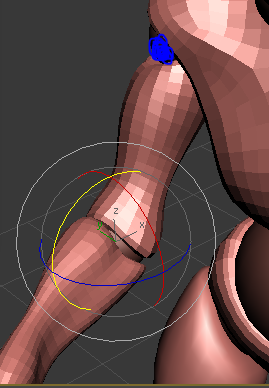Hello, everyone! I hope my problem isn't too 'beginnerish'. I'm doing research on motion synthesis now, trying to implement the Deep Mimic paper (DeepMimic) by BINPENG XUE, in this paper, I need to first retarget character A's motion to another character B to make the reference motion clips for character B, since we don't have character B‘s reference motion. The most important thing is that in the paper, the author copied character A's joint's rotation with respective to joint's local coordinate system (not the parent) to character B. In my personal understanding, the joint's rotation with respective to joint's local coordinate system is something like that in the attached photo, where for the Elbow joint, i need to get the Elbow's rotation in the elbow's local coordinate system (i'm very grateful for you to share your ideas if i have misunderstanding about it ?)
I have searched many materials on the internet about how to extract the local joint's information from FBX, the most relative one i found is the pivot rotation( and geometric transformation, object offset transformation). I'm a beginner in computer graphics, and i'm confused about whether the pivot rotation( or geometric transformation, object offset transformation) is exactly the joint's local rotation i'm seeking? I hope someone that have any ideas can help me, I'd be very grateful for any pointers in the right direction. Thanks in advance!







